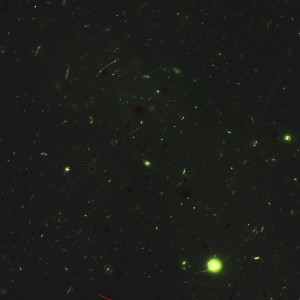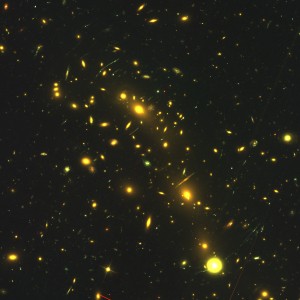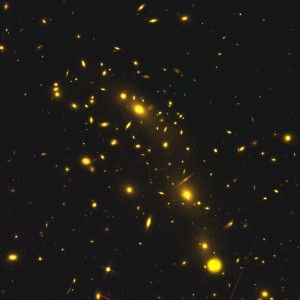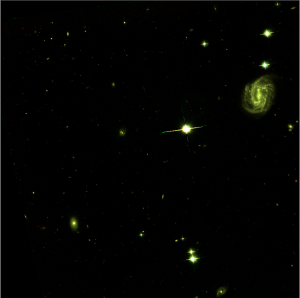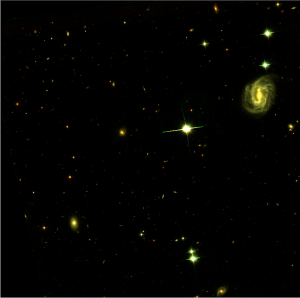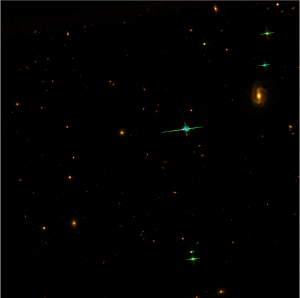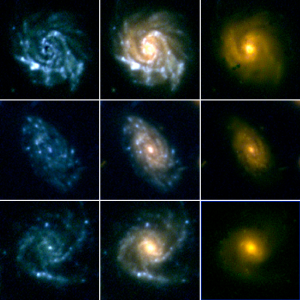Colourful galaxies
Galaxies in our Universe present a wide range of properties, such as size, shape, morphology, or colour. As they evolve, their properties change. In particular, colour, traces the age, the temperature and relates to the composition of the stars they are made of. Our eyes are able to differentiate between objects with different colours, but for the purpose of scientific use, we need refined methods to estimate the profile and the flux of objects with different colours, meaning, we need to teach our computers to see colours. Accurately extracting colours from astronomical images has many applications, from cosmology to stellar evolution. For that purpose, we developed a method based on Morphological Component Analysis to separate objects, solely based on the fact that they have different colours and that they are sparsely represented in an adapted dictionary. Our method, called MuSCADeT (Multi-band morpho-Spectral Component Analysis Deblending Tool) was successfully applied to real images for various purposes:
Strong gravitational lensing
In strong gravitational lensing, the close alignement between background sources and lens galaxies results in lensed images being completely blended in the glare of foreground galaxies. In order to conduct thorough analysis of the lensed source it is thus necessary to accurately remove the light profile of the lens from the data. Given sources have to be at higher redshift for lensing to occur, they are made of younger stars. As a result, source galaxies are expected to be of bluer colour than lenses. Teaching our computers to differentiate between objects with different colours, allows to separate them in a model-independent manner, resulting in better reconstructions of lens and source profiles.
Not only can we apply this method to galaxy-scale lens, but also can we use it on cluster lenses. Making use of the deepest high resolution images provided by the Hubble Frontier Fields (HFF), we were able to separate whole samples of multiply imaged sources. This allows us to compute the flux of lensed images without being contaminated by the light from the cluster galaxies. We are then able to access magnification ratios of multiply imaged sources and therefore to use it to constrain mass models.
Galaxy evolution
Nearby galaxies may present spiral structures where spiral arms are the host of intense star forming regions. These spiral galaxies also contain older red stars which we can see in their halo. Sampling the distribution of these two stellar populations can teach us a lot about the dynamics and evolution of spiral galaxies. Until now, separating these two components is performed by fitting analytic elliptical profiles the the red halo in order to extract the blue star-forming regions. Applying our method to the parallel fields of the HFF survey, showed a very good separation of both red and blue component, revealing structures in the red halo along the spiral arms. Using the result of our separations, we are able to compare the morphologies of galaxies in different environments and compare the behaviour of young and old stellar populations, thus giving us insights in the history of evolution of galaxies.
Hyper-spectral data
With the dawn of hyper-spectral (see MUSE for instance) data, we know have observations of astronomical objects at various wavelength. Our method being designed to separate objects with different spectra in multi-band images, we are able to apply our method to such data to separate a whole variety of objects that can only be seen at a very specific range of wavelength and isolate them from the continuum.
Publications
1- Multi-band morpho-Spectral Component Analysis Deblending Tool (MuSCADeT): Deblending colourful objects. Joseph, R., Courbin, F., & Starck, J.-L. (2016). , (2015), 1-11.

